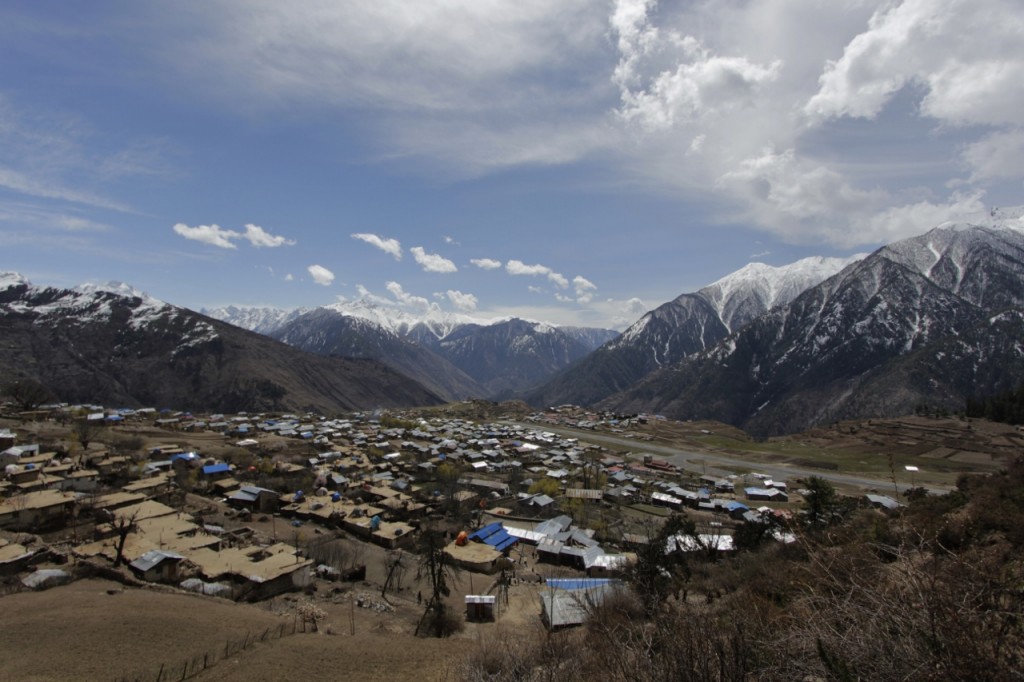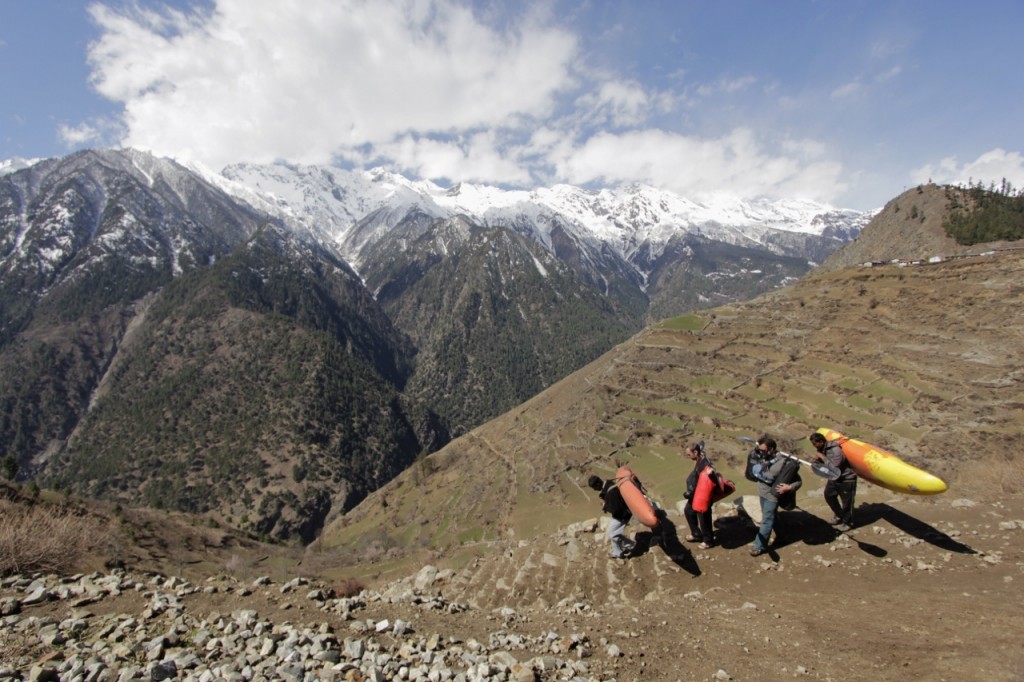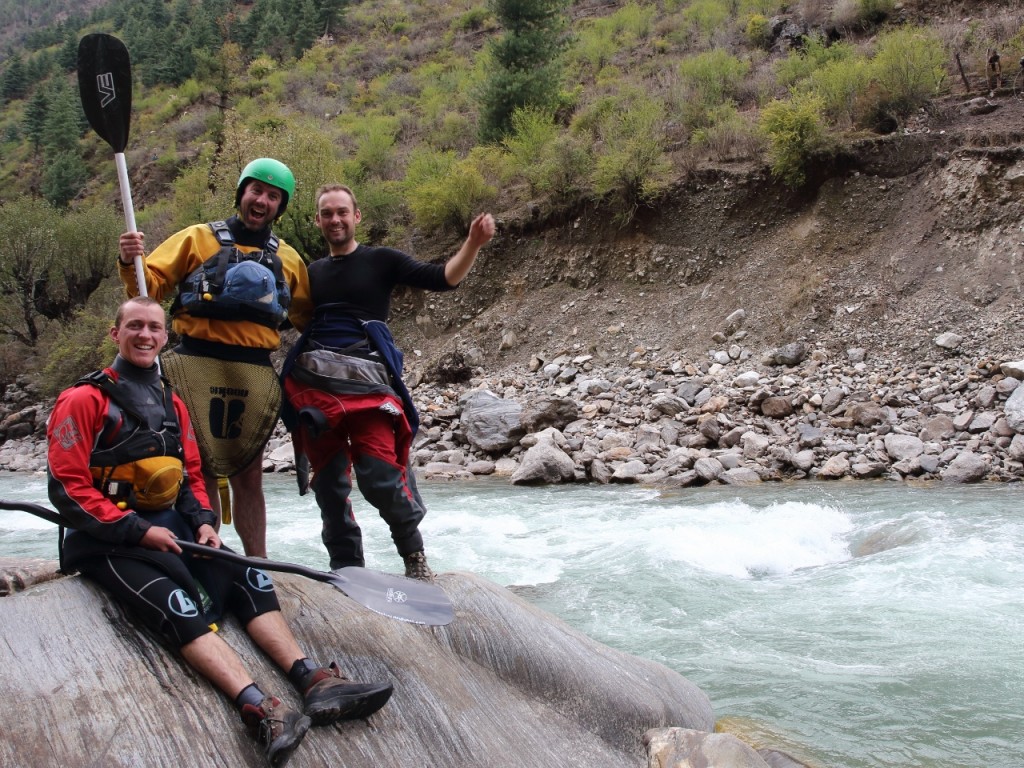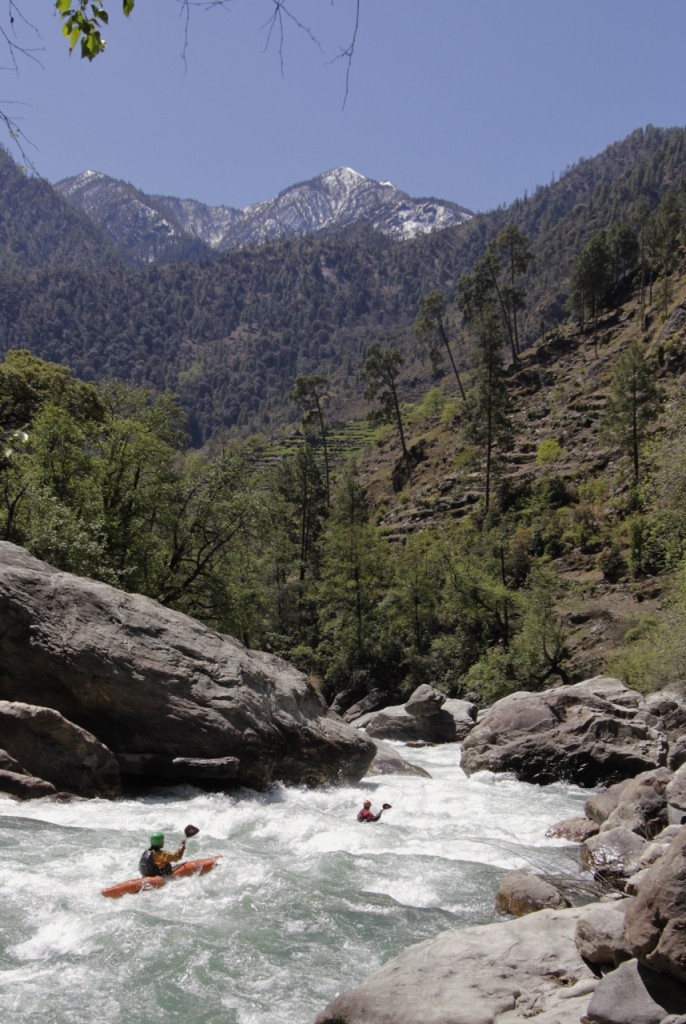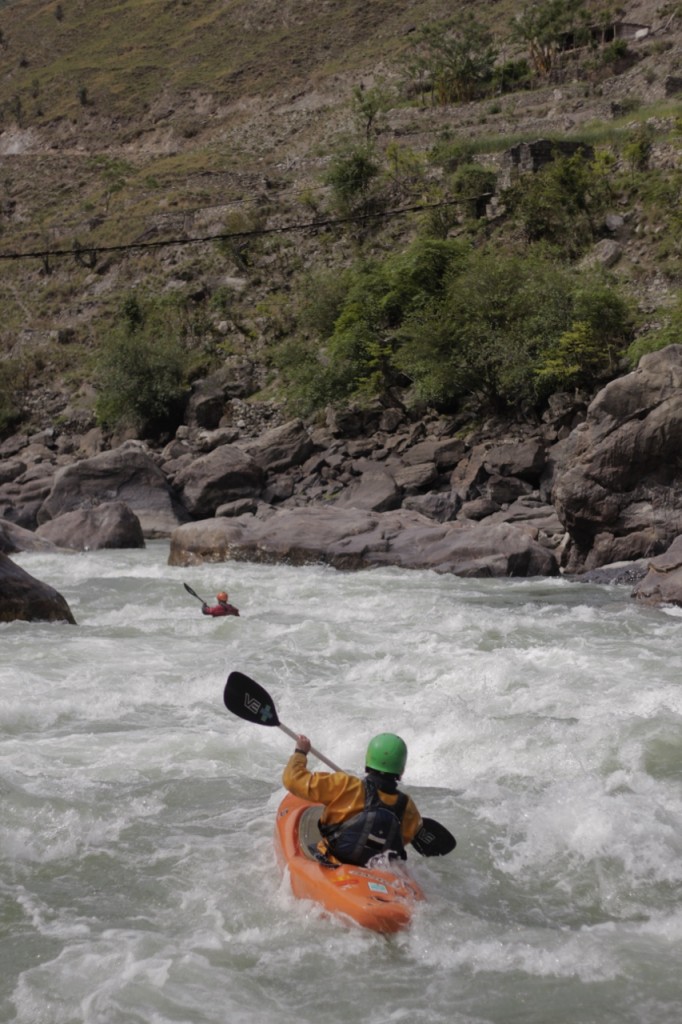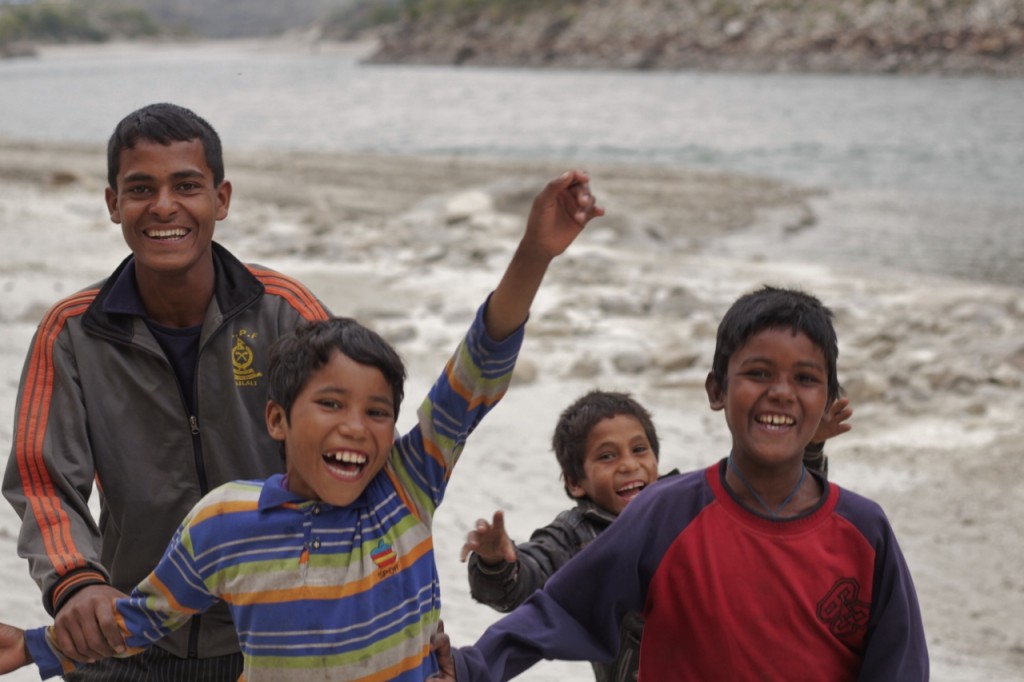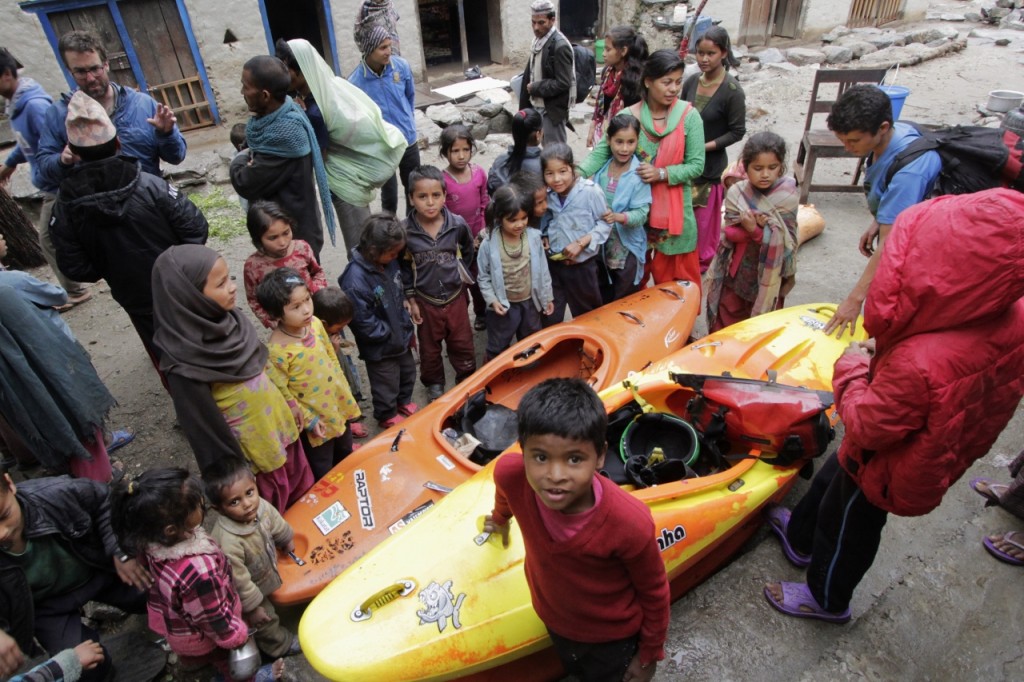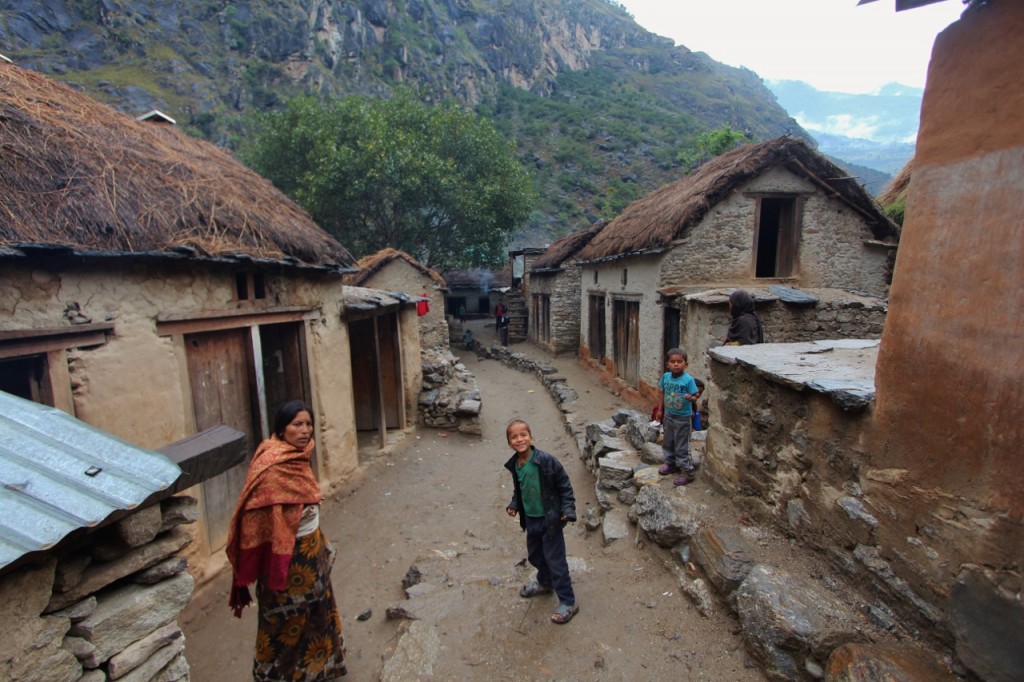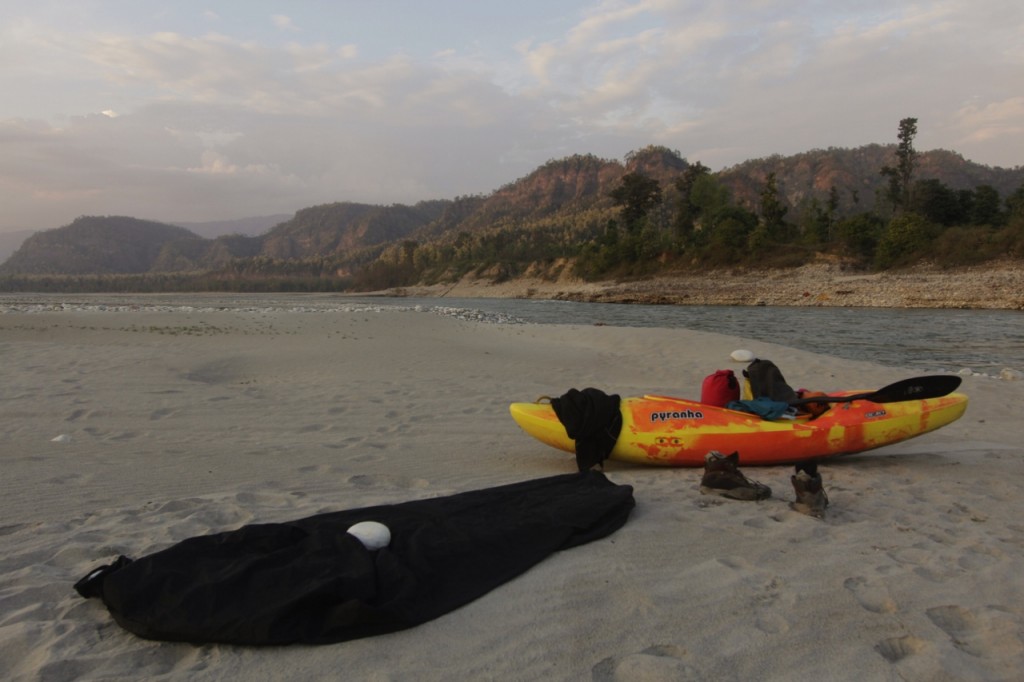The Humla district in the west of Nepal is one of the highest and most remote in Nepal. Getting there ether involves a nine day walk from the nearest road, or a flight landing onto a short, sloping runway in Simikot. Many pilgrims travel through Simikot on their journey to Mt. Kailash. However, we were not there for walking, we were more interested in the base of the valley. The Humla Karnali.
The Humla is described as “one of the finest whitewater kayaking trip of its length in the world” and as such, is an ambition of many paddlers . With 400km of incredible paddling, in an extremely remote area of Nepal, it was hard to say no when George Fell asked if I wanted to join him and Stu Martindale on their trip.
We drop out of the air onto the modest runway at Simicot, wait for our boats, then the next day hire porters to help carry our boats 1000m down to the river. This is my first visit to the Himalayas, and the scale is mind blowing. Huge peaks tower above us with vast expanses of terraced land leading down to the rich blue bubbling Humla Karnali.
We are here in April, low water season, but the power and continuous nature of the river is still apparent. For the first couple of days we paddle short, exciting sections, between portaging long gorges chocked with colossal boulders. After all the boat carrying on the first two day I begin to doubt the hype of the river, but luckily this is short lived. By day 3 the paddling really kicks off. Long sections of fantastic whitewater flow beneath sawing eagles and stunning snow-capped mountains. Nepali children hoot and whistle from the bank as we soak up the incredible surroundings
It soon becomes clear that mistakes on this river would be very costly and swim would be very bad news. This committing form of trip is new to me and I learn lots from George and Stu, portaging when necessary and picking lines down powerful whitewater.
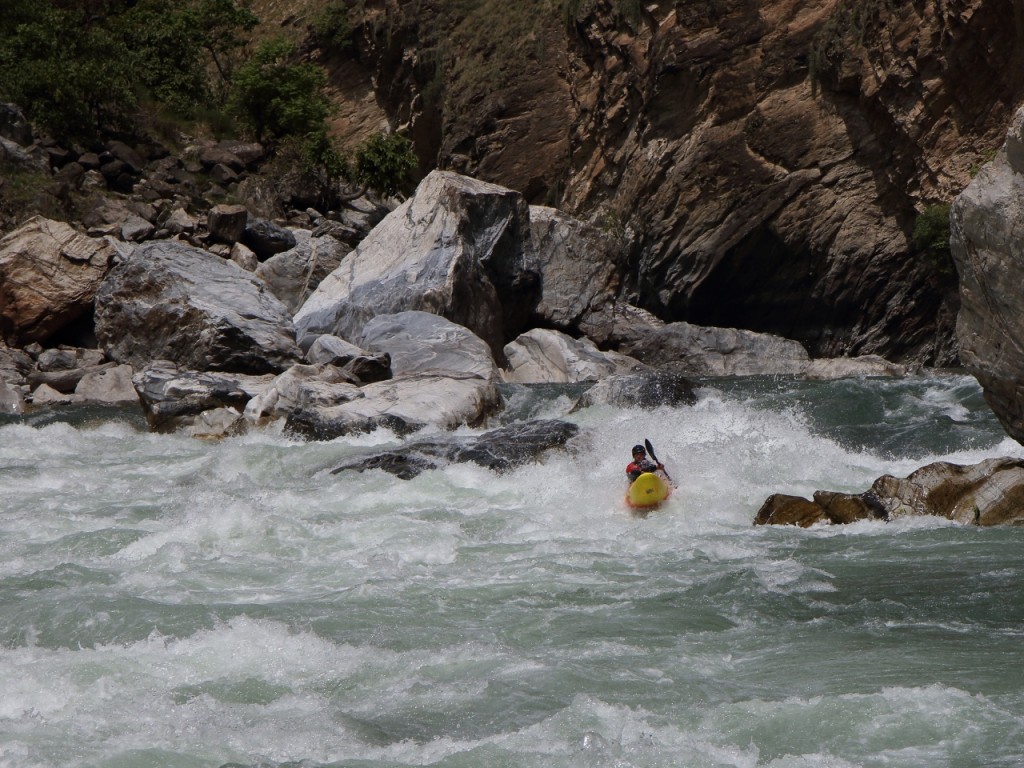
Jonny enjoying some of the fantastic whitewater as the river increases in volume. Photo – Stu Martindale
As we approach the final and most challenging gorge of the trip we decide to camp early and inspect the section from the dirt track high above. Exhausted, we climb the valley side and stumble upon the village of Sani Gad. The inhabitants welcome us with huge smiles and offer a room which, after 5 days nights in bivi-bags, we accept immediately. We chat and play with the locals and spend time exploring the fascinating village. It feels like we have been teleported back to the medieval age. Goats, chickens and cows roam around the piles of hay on the terraced wheat fields. Houses are skilfully constructed with stone and finished with thatched roofs and wooden struts for windows. Wood smoke bellows from every house.
After some amazing sweet, spicy lemon tea, the village chief invites us to dinner. We enter his dimly lit house and perch on his bed whilst his daughter and wife tend to the food over a wood stove. We enjoy rice, lentils, spicy spinach and a helping of fresh goat meat and cautiously delve into the curds.
The following day we walk around the long rapid below Sani Gad before getting into the hard gorge, and getting back into the pleasing routine of quality rapid after quality rapid. At the end of the day we have finished all the hard rapids of the Humla Kanarli
We reach the end of the 180km Humla Karnali the following day and paddle on – into the Lower Karnarli section. Driven by dreams of beer and steak we pick the pace up, clocking two 100km days filled with sections of amazing big volume class 4, and fantastic scenery, to smile our way down.
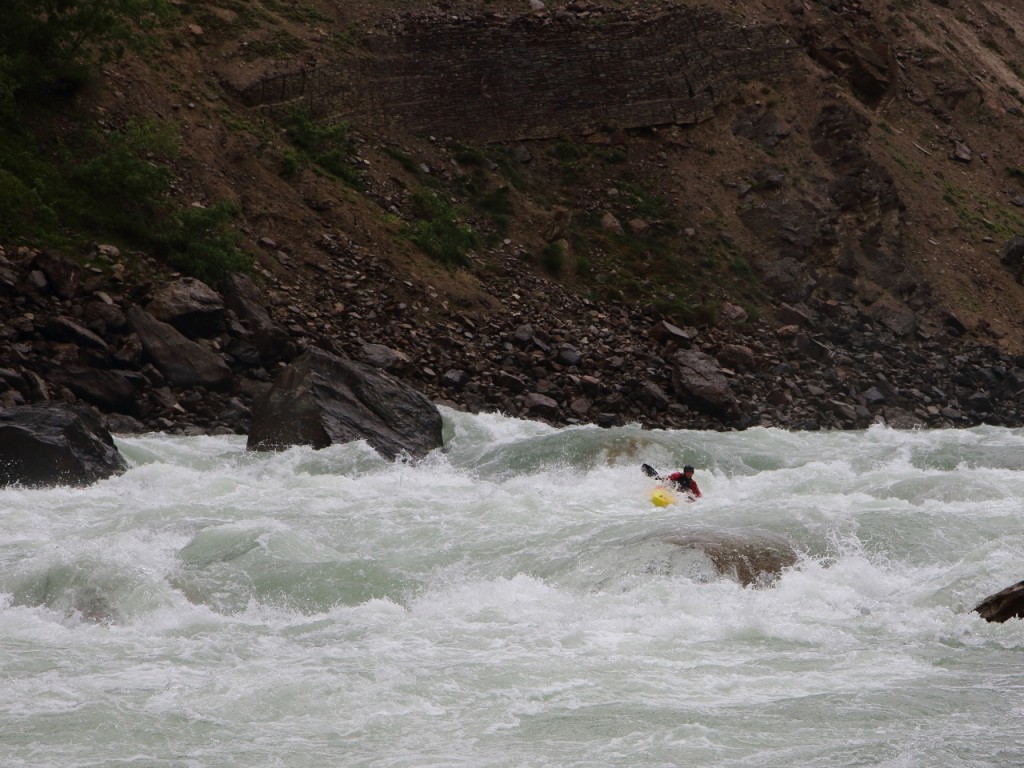
Jonny immersed in more big water happiness. Photo – Stu Martindale
Bivying under the fantastic stars, by a warm fire each night, gives us chance to reflect on what has been an incredible few days of paddling.
Reaching the bridge at Chisipani the Humla certainly lived up to all the hype. 400km of fantastically continuous whiteweter, in the bottom of a magnificent valley provides the perfect setting for an awesome journey on one of Nepals finest rivers.
Thanks George and Stu for an amazing trip and I look forward to another 2 months of kayaking in this awesome country.




